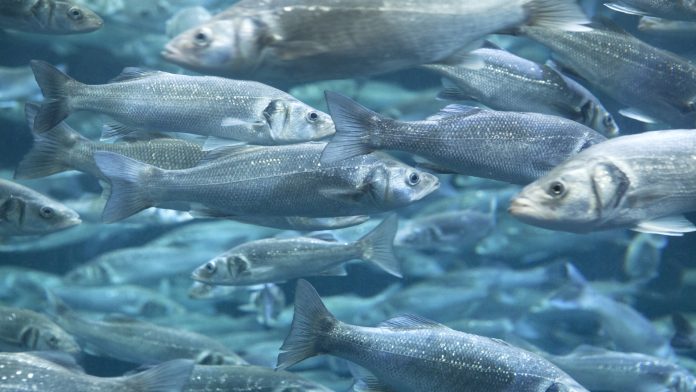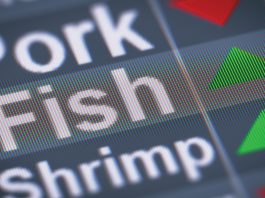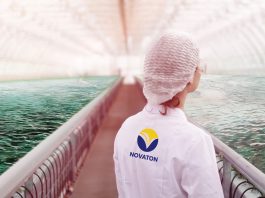The Innovation Platform spoke to Nova Q’s Managing Director, Julian Beatty, about Nova Q’s work promoting sustainable fish farming, and what benefits its products bring.
Nova Q Ltd is an innovative distributor of biological products and specialist solutions for wastewater, agriculture, sustainable fish farming and food markets across Europe. Innovation is at the company’s core, with the belief that innovation is about delivering value to customers in a managed way.
Key products provided by Nova Q include: disinfectants; bacteria and crop nutrition for agriculture; natural bacteria solutions for wastewater treatment, anaerobic digestion, compost, septic tanks, and agricultural slurries; bacterial solutions for Recirculating Aquaculture Systems (RAS); remediation solutions; open water and pond remediation solutions; activated carbon and odour prevention products for waste, agriculture, compost and landfill markets; and ecological detergents and sanitisers.
The Innovation Platform spoke to Nova Q’s Managing Director, Julian Beatty, about how the company is active across industries, particularly the aquaculture sector, and what benefits its products bring.
Can you begin by outlining Nova Q and the sectors in which you are active?
Nova Q connects customers with innovative products and technologies and vice versa. All our projects have an environmental angle and, for most, we have engaged over many years with the suppliers, helping them gain insights into complex technical markets.
Our core product range, since very early on, has been the bacteria products from BluePlanet Labs in the USA. Initially working on wastewater treatment, we have helped them establish a presence in European markets such as compost, anaerobic digestion, agriculture, environmental remediation of lakes and rivers, and now Recirculating Aquaculture Systems (RAS) with RAS-Right.
Bacteria is such an essential aspect of sustainable fish farming, and it has brought us into contact with great technologies including nano-bubbles, biogas upgrade, desalination, etc. – all of which are likely to play a role in our drive to net-zero carbon emissions.
When developing new solutions for aquaculture, how important is it to ensure that they remain environmentally friendly, and how do you work to include that in your development pathway?
The environment is core to us. We take a big picture view on all our products – even those such as Activated Carbon, which do not have the best environmental credentials – and we work with a supply chain that includes the regeneration of waste carbon as part of the mix.
Aquaculture is interesting as it is such an environmental contradiction: on the one hand, there has been a lot of often well-earned bad press due to practices in some of the most beautiful locations in the World. And yet on the other, as an industry it is, in our view, the furthest down the road in establishing itself as a truly green source of protein to feed the growing global population.
Bacteria is key to environmental water quality, and water quality is key to the future of aquaculture. The challenge for Nova Q is to make that link tangible and valuable to the market.
The opposite of bacteria is disinfection. In this area, we have been involved in the development of Hydrus™ and now Hydrus™RAS, an innovative chlorine disinfectant which is both powerful and fast-acting, but also not classed as hazardous. Understanding bacteria has helped us add value in disinfection. Having the capacity for fast disinfection of RAS systems, followed by a rapid and predictable restart of the biomedia, is a strong value proposition.
What would you say have been the biggest/most important innovations in Recirculating Aquaculture Systems (RAS) technologies in recent years, and what makes Nova Q’s technologies unique?
The expansion of fish farming to the full grow out recirculating systems we see emerging today is a remarkable story. However, the real success story is the emergence in salmon RAS of a viable model for growing post-smolts, allowing the adult salmon to spend one less winter at sea. Given the hazards of sea cages – whether to salmon or the environment – this must be a good thing.
From the early days of utilising water treatment knowledge with perhaps too little understanding of some of the engineering challenges of building large scale RAS, the dial has perhaps swung too far the other way. The big aquaculture engineering companies have designed great systems. Still, a lot of the current problems RAS operators are now experiencing, whether it is the build-up of toxins like Hydrogen sulphide, or of contaminants like geosmin or MIB, can easily be solved utilising existing bacterial wastewater treatment knowledge.
RAS going forward will need to not just understand the bacteria in the biome, but actively influence and control it. This will be managed by both positive bacteria additions, such as RAS-Right, and comprehensive disinfection with safe to use products like Hydrus RAS. For instance, instead of just seeding a bio-filter and then just letting appropriate biomass emerge, continually augmenting the media with the right bacteria for the function required is the way forward.
Hydrus RAS, as a disinfectant is both environmental in that it denatures to brine, but by not being classed as hazardous removes a risk to plant workers, currently exposed to a wide raft toxic and aggressive chemistry.
What are the biggest benefits of these technologies to the aquaculture sector?
Predictability and consistency over time of the media beds mean cleaner water. Cleaner water means healthier fish. No H2S removes a significant source of fatality in the industry. Eliminating geosmin and MIB can reduce or stop the need for stressful purging in full grow-out systems.
There is no shortage of disinfectants on the market, but the current practices mean staff are regularly exposed to some nasty chemicals, not to mention the issues of disposal. Hydrus RAS is a safe and environmentally friendly yet effective way to complete this essential step.
Overall, these technologies, if they can help fine-tune RAS operations and make it a more viable part of the whole aquaculture system, are going to help fish-farming’s sustainability case. If we can show as a sector that we are having less and less of an impact on the environment, we are going to do much better at attracting today’s sustainability-minded consumers and investors.
Many of the technologies you have developed – such as Hydrus RAS – have applications in numerous areas/industries. How important is this diversification when developing new products?
Diversification is crucial for us – we tend to grow by bringing our existing products into new or adjacent markets. It allows us to capitalise on the experience we have gained in working with the products. With Hydrus RAS for instance, we originally sold it mainly as a surface disinfectant for cleaning purposes, but have found new applications for it in RAS, in agriculture, and in healthcare.
Moving forwards, where will your priorities lie?
In RAS, our aim is to change the perception of RAS operators as to how they manage bacteria in a bio-filter as an active tool. Regular ‘maintenance’ for the bio-filter has a value in the production of healthy fish! This view of continual bacterial augmentation is normal in advanced industrial and municipal wastewater, and we need to catch up in RAS.
More widely at Nova Q, COVID-19 has brought new opportunities for Hydrus, and ACF bacteria products from BluePlanet are being used for major environmental projects across the globe. The use of bacteria in agriculture, and organic agriculture in particular, is the future, and we are always interested in technologies that help inch us towards net-zero carbon.
Julian Beatty
Managing Director
Nova Q Ltd
+353 1 2542 276
innovation@nova-q.ie
https://www.nova-q.ie/
Please note, this article will also appear in the second edition of our new quarterly publication.









